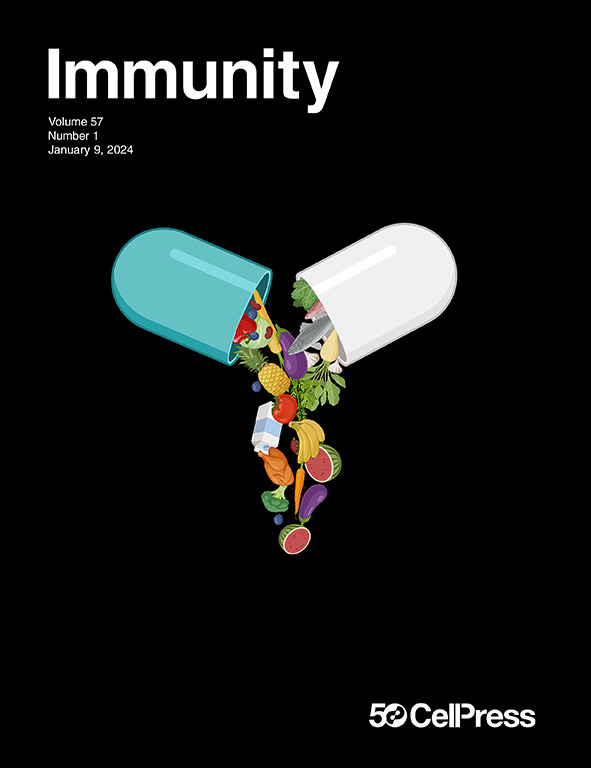Computationally designed proteins mimic antibody immune evasion in viral evolution
IF 25.5
1区 医学
Q1 IMMUNOLOGY
引用次数: 0
Abstract
Recurrent waves of viral infection necessitate vaccines and therapeutics that remain effective against emerging viruses. Our ability to evaluate interventions is currently limited to assessments against past or circulating variants, which likely differ in their immune escape potential compared with future variants. To address this, we developed EVE-Vax, a computational method for designing antigens that foreshadow immune escape observed in future viral variants. We designed 83 SARS-CoV-2 spike proteins that transduced ACE2-positive cells and displayed neutralization resistance comparable to variants that emerged up to 12 months later in the COVID-19 pandemic. Designed spikes foretold antibody escape from B.1-BA.4/5 bivalent booster sera seen in later variants. The designed constructs also highlighted the increased neutralization breadth elicited by nanoparticle-based, compared with mRNA-based, boosters in non-human primates. Our approach offers targeted panels of synthetic proteins that map the immune landscape for early vaccine and therapeutic evaluation against future viral strains.

计算设计的蛋白质模拟病毒进化中的抗体免疫逃避
反复出现的病毒感染浪潮需要对新出现的病毒仍然有效的疫苗和治疗方法。我们评估干预措施的能力目前仅限于对过去或流行变体的评估,与未来变体相比,这些变体的免疫逃逸潜力可能有所不同。为了解决这个问题,我们开发了EVE-Vax,这是一种设计抗原的计算方法,预示着在未来的病毒变异中观察到的免疫逃逸。我们设计了83种SARS-CoV-2刺突蛋白,它们转导ace2阳性细胞,并表现出与长达12个月后在COVID-19大流行中出现的变体相当的中和抗性。设计的尖峰预示抗体从b1 - ba中逃逸。在后来的变种中见过4/5二价增强血清。在非人灵长类动物中,与基于mrna的助推器相比,基于纳米颗粒的助推器也突出了增加的中和广度。我们的方法提供了有针对性的合成蛋白面板,为早期疫苗和针对未来病毒株的治疗评估绘制免疫景观。
本文章由计算机程序翻译,如有差异,请以英文原文为准。
求助全文
约1分钟内获得全文
求助全文
来源期刊

Immunity
医学-免疫学
CiteScore
49.40
自引率
2.20%
发文量
205
审稿时长
6 months
期刊介绍:
Immunity is a publication that focuses on publishing significant advancements in research related to immunology. We encourage the submission of studies that offer groundbreaking immunological discoveries, whether at the molecular, cellular, or whole organism level. Topics of interest encompass a wide range, such as cancer, infectious diseases, neuroimmunology, autoimmune diseases, allergies, mucosal immunity, metabolic diseases, and homeostasis.
 求助内容:
求助内容: 应助结果提醒方式:
应助结果提醒方式:


